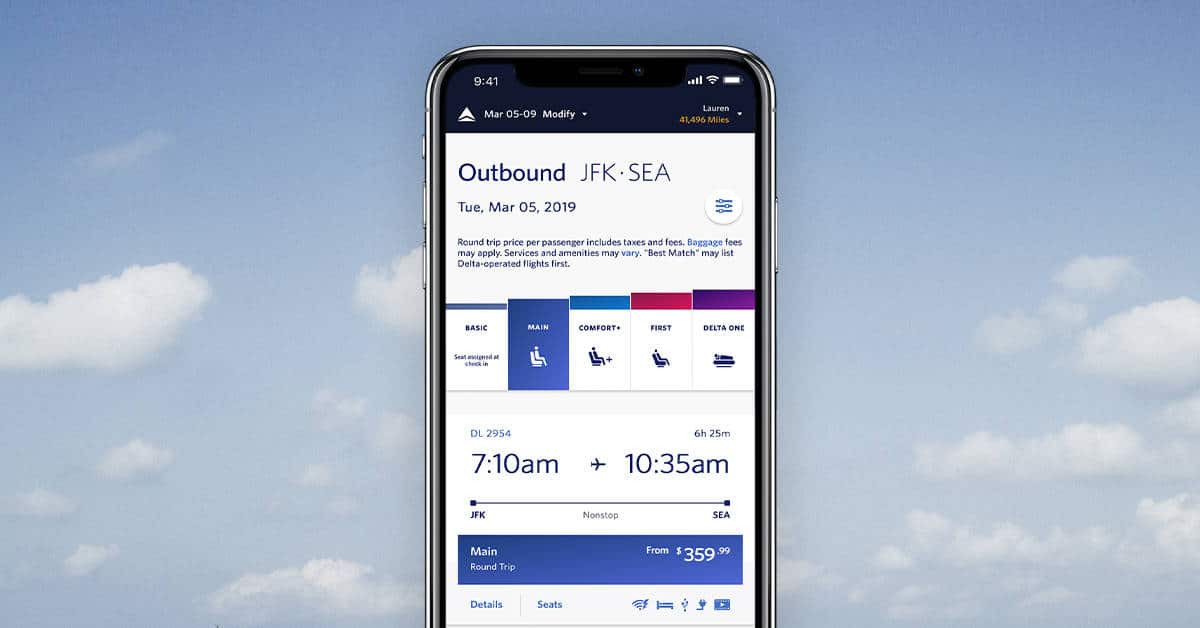Delta boarding is about to change to a color-coded system with more groups and the promise of less stress at the boarding gate. But will it fly with customers?

Boarding is arguably the worst part of the airport experience. You go through the rigamarole of check-in, security, getting to your terminal, finding your gate. Then comes the series of questions: what’s my boarding group? Where do I stand? When do I stand?
Not exactly relaxing.
In a fresh bid to take away some of the stress of getting on your flight, the Delta boarding process is about to become way simpler—by becoming a little more complicated.
Here’s the plan. Beginning in late January, Delta will be increasing the number of boarding groups from six to eight, splitting Premium and Sky Priority zones into four different groups.
Find your color

Preboarding for active duty military and people with special needs will continue as usual. After that, passengers will board in the following order:
- Delta One and Diamond Medallion
- Premium Select and First Class
- Delta Comfort+
- Sky Priority, including Platinum and Gold Medallion, Sky Team Elite, and other loyalty groups
- Main Cabin 1, including Delta Priority Boarding Trip Extra customers
- Main Cabin 2
- Main Cabin 3
- Basic Economy
On flights with no Delta One or Diamond Medallion seating, those passengers will board with the Premium Select group.
To help people keep it all straight, each group will have a distinct color which will be integrated from the time of booking on Delta’s online booking platform and apps, to gate signage when you’re boarding your flight.
How is this going to help make the process easier? Delta believes that by making each boarding group a little smaller, the lines will move faster.
Improving the boarding experience
It doesn’t seem like loading passengers onto a plane should be so complicated. Or take so long.
In reality, it’s a massively complex puzzle for airlines.
Back in 2014, an astrophysicist named Jason Steffen took a crack at it and came up with a model of the most efficient boarding process. His theory was to load back to front, aisle seats on the right first, then the left, followed by middle seats, and so on. (It’s actually more complicated than that, but that’s the basic idea.)
In tests, Steffen’s method was twice as fast as the standard industry method. But it will almost certainly never be implemented because people don’t always travel by individual units. Add a few families with small children who have to board at the same time, and the system already starts to fall apart. Nor could you board your first class before your economy passengers…and isn’t that what flying first-class is partially about?
So we’re sort of stuck with the system we have, and it’s a little messy.
Every airline has different procedures, and their procedures are not always clear. Boarding passes can be confusing, apps can crash, gates and seat assignments can change without warning.
Then there’s the dizzying array of rewards programs, which create a complex pecking order at the boarding gate, as passengers on certain rewards program tiers board before others.
Delta leads the pack with 27 ways to separate passengers into category groups, ranging from Delta One down to Basic Economy. By comparison, American Airlines has 22 categories, and United has 19.
People cut in line, board with earlier groups when they think they can get away with it, argue with gate attendants over baggage allowances, and once aboard, take their time getting their bags stowed, stopping all forward progress for the dozens of people behind them.
It’s all a recipe for unhappiness and let’s face it: unhappy passengers are hard to turn into loyal repeat customers.

Another tweak in the Delta process
Delta boarding processes have been tweaked repeatedly in recent years to test various plans to see how they influenced customers, for better or worse.
For example, in March 2017 a move to larger, more defined pillars marking four lanes to keep queues more organized was met with considerable criticisms. Four lanes for six groups kept the lines from stretching out into the main aisle, but groups became jumbled and some say it caused more stress than it solved.
But a change in February 2018 created a fourth Main Cabin boarding group, which lead to a double-digit improvement in customer satisfaction (at least for those customers not relegated to that new fourth group). That same year, gate agents recommended Delta Comfort+ passengers board earlier to reduce gate crowding. Both those ideas have been incorporated into the new boarding process.
In a press release, the company described the Delta boarding process upgrade as “the latest evolution in Delta’s multi-year work to bring consistency, simplicity, and clarity to the gate and boarding experience”.
Goodbye “zones”, hello “branded boarding”
This change to Delta’s process is not just about reducing the number of passengers milling around the gate during boarding.
Despite Delta stating in a press release that this move represents a norm-busting shift from “zone boarding” to “boarding by branded fare purchased,” it’s more a refinement of the current system: the more you pay for your ticket and the more frequently you fly, the earlier you board your plane.
The biggest innovation in the new system may be in giving customers more of a sense of control from the very start of the process. By tying the boarding groups to a specific ticket class, and specific colors, the boarding process may seem less arbitrary and give customers a sense that they’re getting what they paid for.




